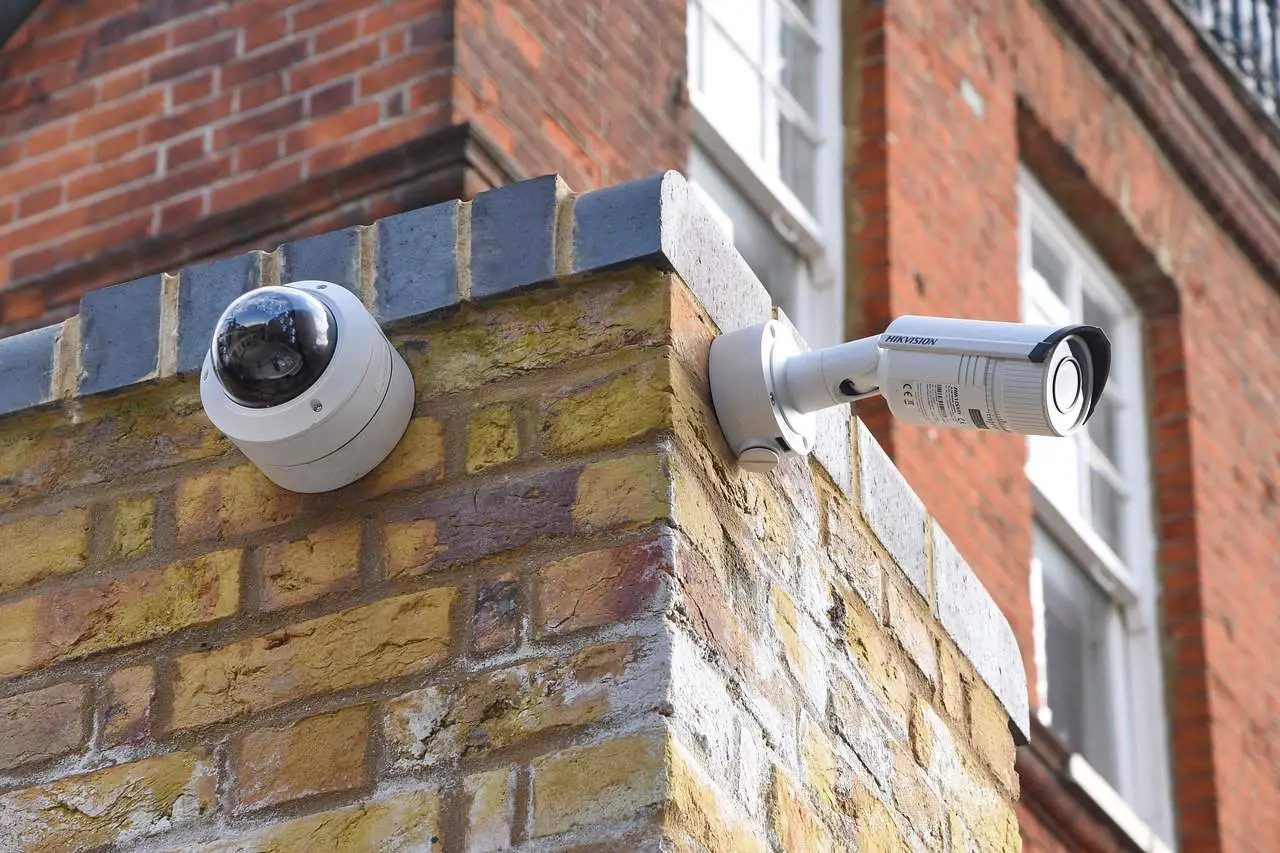All home owners are concerned about the safety and security of their families and their prized possessions. That’s why most of us spend a considerable amount of our home budgets on installing high-security door and window locks and fitting alarm systems. Some homeowners, however, are prepared to go the extra mile, and will invest large sums to install a CCTV home security system. Why do they do that, you may wonder? Well, they believe that outdoor CCTV monitoring is the most effective means of deterring thieves and ‘guaranteeing’ the security of their property. If you, too, are considering making this investment and installing a CCTV monitoring system, the important questions you’ll want to know the answer to are, where are the best strategic locations for positioning CCTV cameras, and which locations will provide comprehensive surveillance coverage of my property and protect my home from intruders?
CCTV Camera security
Use a mixture of visible and hidden CCTV cameras for the greatest effect
Visible cameras can, and often do, act as deterrents to casual burglars. If they can see the camera and feel that their movements will be monitored, then they are less likely to intrude. However, that is often insufficient to put off a seasoned burglar. Alarms and CCTV cameras hold no fear for them. They often case a home and look to see where there are cameras set up. Once spotted, they will be able to tamper with these cameras, particularly if they are not mounted high enough off the ground. The good news is most burglars won’t be expecting to also encounter hidden cameras. They may be able to disable the obvious ones, but will still be held to ransom by the cameras you’ve cleverly secreted in the garden or grounds.
Don’t concentrate CCTV cameras on one spot: try to cover the whole perimeter
It’s tempting to simply point cameras at the entry points to a property. In many ways this makes perfect sense. Who wouldn’t want surveillance on their front and rear doors? The only problem with this approach is that a lack of coverage around the rest of the property could potentially leave it vulnerable, and for intruders, that vulnerability is enticing.
So what is the alternative? Well, the optimal solution is to position security cameras at different locations around the property and to adjust their angles of view. The point of doing this is to provide 360-degree coverage of all the entrances and potential hiding places around the property. The added benefit of external perimeter coverage is that any burglar lurking around the outside of a home will have their movements tracked, and this evidence will be invaluable to the police should the intruder go on to commit a burglary.
Higher is generally better
There’s little point mounting CCTV cameras at eye-level. If they’re within reach burglars will either destroy the camera, tamper with their wiring to disrupt the video feed or even spray-paint the camera lens. Whatever method any intruder uses, the upshot is that the CCTV cameras will be rendered useless for security purposes.
If a CCTV camera is mounted high on a building such a risk will be avoided. Not only will burglars be unable to tamper with, or worse still, destroy the camera: but mounting cameras high on the building façade will also provide wider and more comprehensive surveillance coverage of the property. If the mounted cameras are also angled towards the main entrances to the home, this will make intruders think twice before breaking into the property.
For a ‘belt and braces’ approach combine CCTV with motion sensors
If you’re looking for the perfect partner for CCTV security surveillance when darkness falls, then it has to be motion detector technology. Motion detector technology, along with night vision lenses, are generally used to detect a burglar’s movements in and around the property. Many savvy homeowners like to a motion detector to an outdoor light, so that will turn on automatically when the equipment senses movement. Motion detector sensors are often installed in areas that are not really visible from the street, such as the rear of the home. They’re useful because it’s unlikely that anyone from a neighbouring property, or a passer-by would be likely to detect an intruder if he/she was lurking there. Once the light is triggered by the sensor, however, neighbours will be alerted and could raise the alarm.
Where are the optimal places for installing CCTV cameras?
The short answer is it all depends on the property. Ideally all main entrances and exits should be covered: so front and rear doors, and first floor windows should be monitored. The reason for this is that these are the most common entryways for burglars. The added advantage of course is that with a front door camera you can see who is approaching when you’re in the house. Ideally place the front door camera slightly above the door and pointing down so that it covers the area a few feet in front of the opening. Another option would be to put the camera inside the home, on the window sill of easily accessible windows, so it has a view of the garden or yard in front of the window. If you place cameras outside, make sure your cameras are waterproof (IP66-rated) and ideally have night vision so that they can record even when darkness falls.
Camera lens coverage
The placement of a camera will often depend on the lens it uses. Cameras with a focus range of around 45 to 75 degrees should be aimed at specific areas, such as a doorway or a garage door. If you use a wide angle lens, place your camera where it can see 75 to 180 degrees without obstruction. If your camera rotates check with the manufacturer to calculate how much unobstructed viewing area the lens needs.
Hidden CCTV cameras
Whilst wall-mounted CCTV cameras can offer an immediate and visible deterrent to would-be burglars, there is also much to be praised about hidden security cameras. If you are able to hide your security cameras, thieves will be unlikely to damage or disable them.
Tips for hiding internal and external security cameras
Although it is tempting to go to great lengths to disguise the outward appearance of a security camera, sometimes it’s the best policy to keep things simple. There’s no reason why you can’t hide cameras in everyday objects, whether inside or outside. The caveat to that would be trying to hide the camera in a valuable or noticeable ornament. If an object looks expensive it will draw the burglar’s eye, and all you end up with is a stolen object and a damaged camera. Also avoid hiding the camera in an object that is clearly fake and which shouldn’t be there. Internal security cameras can be hidden in, or disguised amongst a variety of objects – for instance:
- books
- smoke alarms
- toys and stuffed animals
- small electronics gadgets
- paperweights
- light switch plates/ patresses
- mirrored tissue paper box or other shiny desk accessories
Outdoor security cameras can be hidden amongst common outdoor objects, or disguised as:
- fake rocks
- birdhouses or bird feeders, or
- lawn ornaments – though these themselves can often covetable.
There are limitless options for concealing security cameras. The only proviso is that whatever you do, it shouldn’t be obvious – otherwise your efforts will all be in vain. Subtlety is often useful when it comes to security camera placement. A small camera concealed in a houseplant will do the job without drawing attention: similarly, a camera placed high on a shelf amongst books and ornaments will do the job just as well. If you’re blessed to live in a property with high ceilings or ornate cornicing, then you should use these to your advantage. The camera may not be truly invisible there, but it will be high enough off the floor to prevent sabotage or damage. Some cameras even offer camouflaged skins as protection, like the Nest Cam sunflower: whether these are authentic enough to fool a burglar is debateable, but when they’re in a rush to get out of the property with as much as they can carry, the skin may be sufficient to fool them.
The most important point to bear in mind, wherever you hide your camera, is pay attention to the wiring if you’re relying on wired security cameras. Hide or camouflage the wires, so they are not obvious to thieves. A wireless camera would avoid these problems, but they tend to be more expensive. As all cameras rely on sensors, make sure these are also hidden or disguised to avoid attention.
How to hide the security camera
Choose the optimal location for the camera. Select a site that allows the camera a clear visual field to the front or back door, the side of the house or darkened area of the yard/garden. This area should be free of leaves, tree branches or other obstructions to allow the widest possible surveillance scope of the area.
Attach the disguised camera to a tree branch, stand or other structure. Use nails, screws or baling wire to secure the disguise camera to a tree branch, stand or other structure so that it cannot be dislodged by the elements.
Test the camera. Check the angle and range of surveillance so that it fully covers the area you want monitored. Adjust until you are satisfied that its positioning is right.

